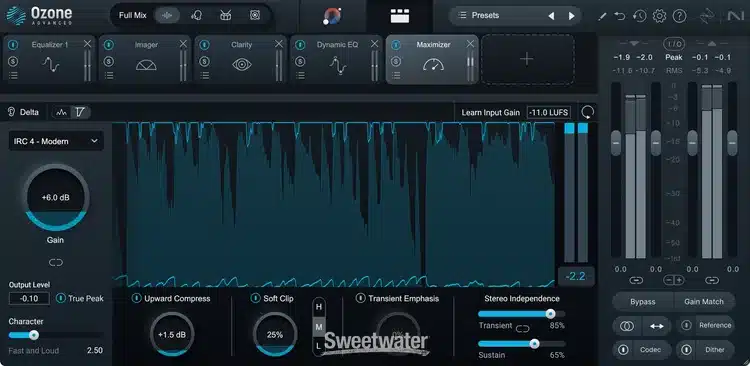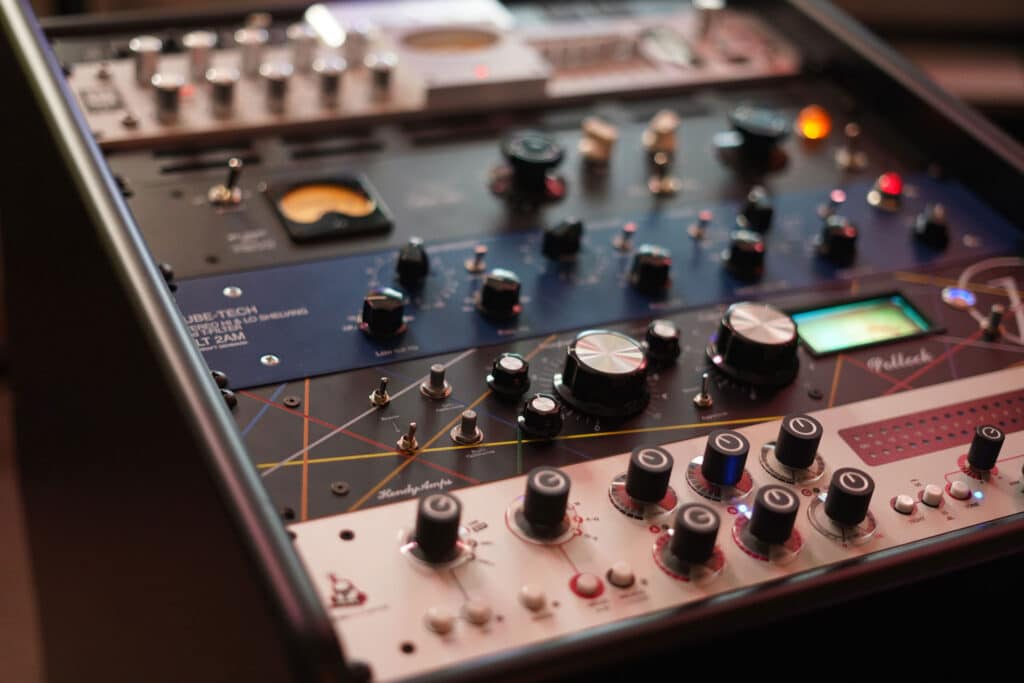Audio mastering is the final step in the music production process, and it is crucial for creating professional-sounding tracks. By understanding the basics of audio mastering, you can enhance your audio production skills and ensure your music is ready for distribution. This comprehensive guide will walk you through the essential steps and techniques involved in the mastering process, helping you achieve polished and professional results.
Introduction
In the world of audio production, mastering is often considered both an art and a science. It involves fine-tuning and balancing the final mix to ensure it sounds great across all playback systems. Mastering can make a significant difference in the quality of your music, transforming a good mix into a great one. Whether you’re a seasoned producer or just starting, understanding the basics of audio mastering is essential for taking your music to the next level.
What is Audio Mastering?
Audio mastering is the process of preparing and transferring the final mix of a track to a data storage device (the master). This master is then used to produce all copies of the track for distribution, whether on CDs, vinyl records, or digital formats. The goal of mastering is to enhance the overall sound quality, ensuring consistency and cohesiveness across all tracks in an album or playlist.
The Importance of Audio Mastering
Mastering is critical because it ensures that your music sounds its best on all playback systems, from high-end studio monitors to everyday consumer headphones. It also brings a level of consistency to your tracks, making sure they all have a similar volume and tonal balance. Without mastering, your music may sound uneven or unpolished, potentially leading to a poor listening experience for your audience.
The Mastering Process
The mastering process involves several key steps, each aimed at enhancing the final mix. While the specific techniques and tools used can vary depending on the project, the fundamental steps remain consistent.
1. Preparation
Before you start mastering, it’s essential to ensure your mix is as polished as possible. This means addressing any issues with levels, EQ, or dynamics in the mix itself. It’s also important to listen to your mix on various playback systems to identify any potential problems.
2. Importing the Final Mix
Once you’re satisfied with your mix, the first step in the mastering process is to import the final mix into your mastering software. This software can be a dedicated mastering program or a digital audio workstation (DAW) with mastering capabilities.
3. EQ (Equalization)
Equalization is used to balance the frequencies in your mix, ensuring no frequencies are too dominant or too weak. This step can help enhance the clarity and definition of your track, making it sound more polished and professional.
4. Compression
Compression is used to control the dynamic range of your track, ensuring that the loud and soft parts are balanced. This step can help make your track sound more cohesive and powerful.
5. Limiting
Limiting is a type of compression that prevents any part of the track from exceeding a certain volume level. This step ensures that your track is loud enough without distorting or clipping.
6. Stereo Imaging
Stereo imaging involves adjusting the spatial characteristics of your track, ensuring it sounds balanced and wide. This step can enhance the depth and dimension of your mix, making it sound more immersive.
7. Adding Dithering
Dithering is the process of adding low-level noise to your track to minimize distortion during the conversion from a higher bit depth to a lower bit depth. This step is essential for ensuring the highest possible sound quality in the final master.
8. Final Review
Before finalizing your master, it’s important to review it on multiple playback systems to ensure it sounds great everywhere. This step can help you identify any issues that may have been missed during the mastering process.
Common Mastering Tools and Software

Several tools and software programs are commonly used in the mastering process. These include equalizers, compressors, limiters, and stereo imaging tools. Some popular mastering software programs include:
- iZotope Ozone: A comprehensive mastering suite with a wide range of tools and features.
- Waves Abbey Road TG Mastering Chain: A versatile mastering plugin that emulates the famous Abbey Road Studios’ mastering chain.
- FabFilter Pro-L 2: A powerful limiter with precise control over the dynamics of your track.
[showmodule id=”25108216″]
DIY Mastering vs. Professional Mastering
While it’s possible to master your own tracks using the tools and techniques described above, many producers choose to hire a professional mastering engineer. Professional mastering engineers have the experience and expertise to bring out the best in your music, ensuring it sounds its best on all playback systems.
The Benefits of Professional Mastering
- Expertise: Professional mastering engineers have years of experience and a trained ear, allowing them to identify and address issues that may not be apparent to the average listener.
- High-Quality Equipment: Professional mastering studios are equipped with high-end gear and acoustically treated rooms, ensuring the best possible sound quality.
- Objective Perspective: A professional mastering engineer provides an objective perspective, helping to ensure your track sounds its best without being influenced by your personal biases.
Preparing Your Mix for Mastering
Before sending your mix to a mastering engineer, there are several steps you can take to ensure it’s ready for the mastering process:
- Leave Headroom: Make sure your mix has enough headroom, typically around -6 dB. This gives the mastering engineer room to work without causing distortion.
- Avoid Over-Processing: Avoid using excessive compression or limiting on the master bus, as this can limit the mastering engineer’s ability to enhance your track.
- Provide High-Quality Files: Export your mix as a high-quality WAV or AIFF file, ideally at 24-bit or 32-bit and the same sample rate as your project.
Mastering for Different Formats
Different playback formats have different requirements, and it’s important to consider these when mastering your tracks. For example, mastering for vinyl requires different considerations than mastering for digital distribution.
Mastering for Vinyl
Vinyl records have unique characteristics that require specific mastering techniques. For example, the low frequencies need to be carefully managed to avoid causing the needle to jump, and the overall volume needs to be balanced to prevent distortion.
[showmodule id=”25108195″]
Mastering for Digital Distribution
Digital distribution platforms like Spotify, Apple Music, and Tidal each have their own loudness standards and requirements. Mastering engineers need to be familiar with these standards to ensure your music sounds its best on each platform.
The Role of Reference Tracks in Mastering
Reference tracks are professionally mastered tracks that you can use as a benchmark during the mastering process. By comparing your track to a reference track, you can identify areas where your mix may need improvement and ensure it meets professional standards.
Using Reference Tracks Effectively
- Choose Relevant Tracks: Select reference tracks that are in the same genre and style as your track.
- Analyze Key Elements: Pay attention to key elements such as frequency balance, dynamic range, and stereo imaging.
- Adjust Accordingly: Use the reference tracks as a guide to make adjustments to your track, ensuring it sounds polished and professional.
The Future of Audio Mastering
The field of audio mastering is constantly evolving, with new technologies and techniques emerging all the time. One of the most significant recent developments is the rise of automated mastering services, which use algorithms to master tracks quickly and affordably.
Automated Mastering Services
Automated mastering services like LANDR, eMastered, and CloudBounce offer a convenient and cost-effective alternative to traditional mastering. These services use algorithms to analyze and process your track, delivering a mastered version in a matter of minutes.
The Pros and Cons of Automated Mastering
- Pros: Automated mastering is fast, affordable, and accessible to anyone with an internet connection. It can be a great option for independent artists and producers on a budget.
- Cons: While automated mastering can produce good results, it may not match the quality and expertise of a professional mastering engineer. Automated services may also lack the ability to make nuanced adjustments based on the unique characteristics of your track.

Conclusion
Mastering is an essential step in the music production process, and understanding the basics can help you achieve professional-sounding results. Whether you choose to master your own tracks or hire a professional, the key is to ensure your music sounds its best on all playback systems. By following the steps and techniques outlined in this guide, you can take your audio production skills to the next level and create polished, professional tracks that stand out in today’s competitive music industry. If you are interested in me mastering your songs, please reach out! if you are looking for an online mastering service that is done by a human in a professional studio in Los Angeles make sure to hit me up!
FAQs
What is audio mastering?
Audio mastering is the process of preparing and transferring the final mix of a track to a data storage device (the master). This master is then used to produce all copies of the track for distribution, ensuring consistency and cohesiveness across all tracks in an album or playlist.
Why is audio mastering important?
Mastering is crucial for ensuring your music sounds its best on all playback systems, from high-end studio monitors to everyday consumer headphones. It also brings a level of consistency to your tracks, making sure they all have a similar volume and tonal balance.
Can I master my own tracks?
Yes, it’s possible to master your own tracks using mastering software and tools. However, many producers choose to hire a professional mastering engineer for the expertise, high-quality equipment, and objective perspective they bring to the process.
What are some common mastering tools and software?
Common mastering tools include equalizers, compressors, limiters, and stereo imaging tools. Popular mastering software programs include iZotope Ozone, Waves Abbey Road TG Mastering Chain, and FabFilter Pro-L 2.
What is the difference between mixing and mastering?
Mixing involves combining individual tracks and adjusting their levels, EQ, and effects to create a cohesive mix. Mastering is the final step in the production process, involving fine-tuning and balancing the final mix to ensure it sounds great across all playback systems.
What are automated mastering services?
Automated mastering services use algorithms to analyze and process your track, delivering a mastered version quickly and affordably. Examples include LANDR, eMastered, and CloudBounce. While convenient, they may not match the quality and expertise of a professional mastering engineer.
